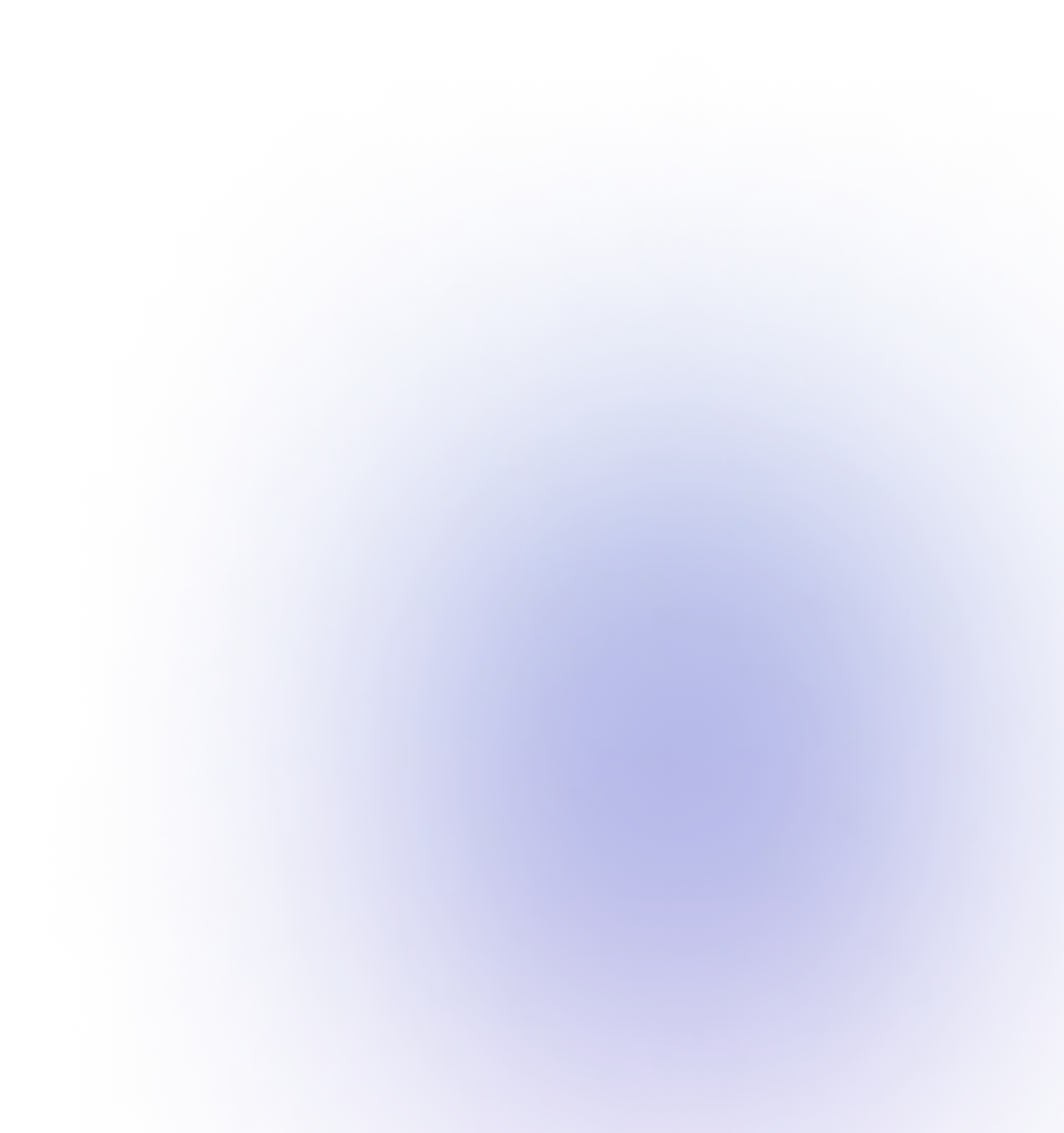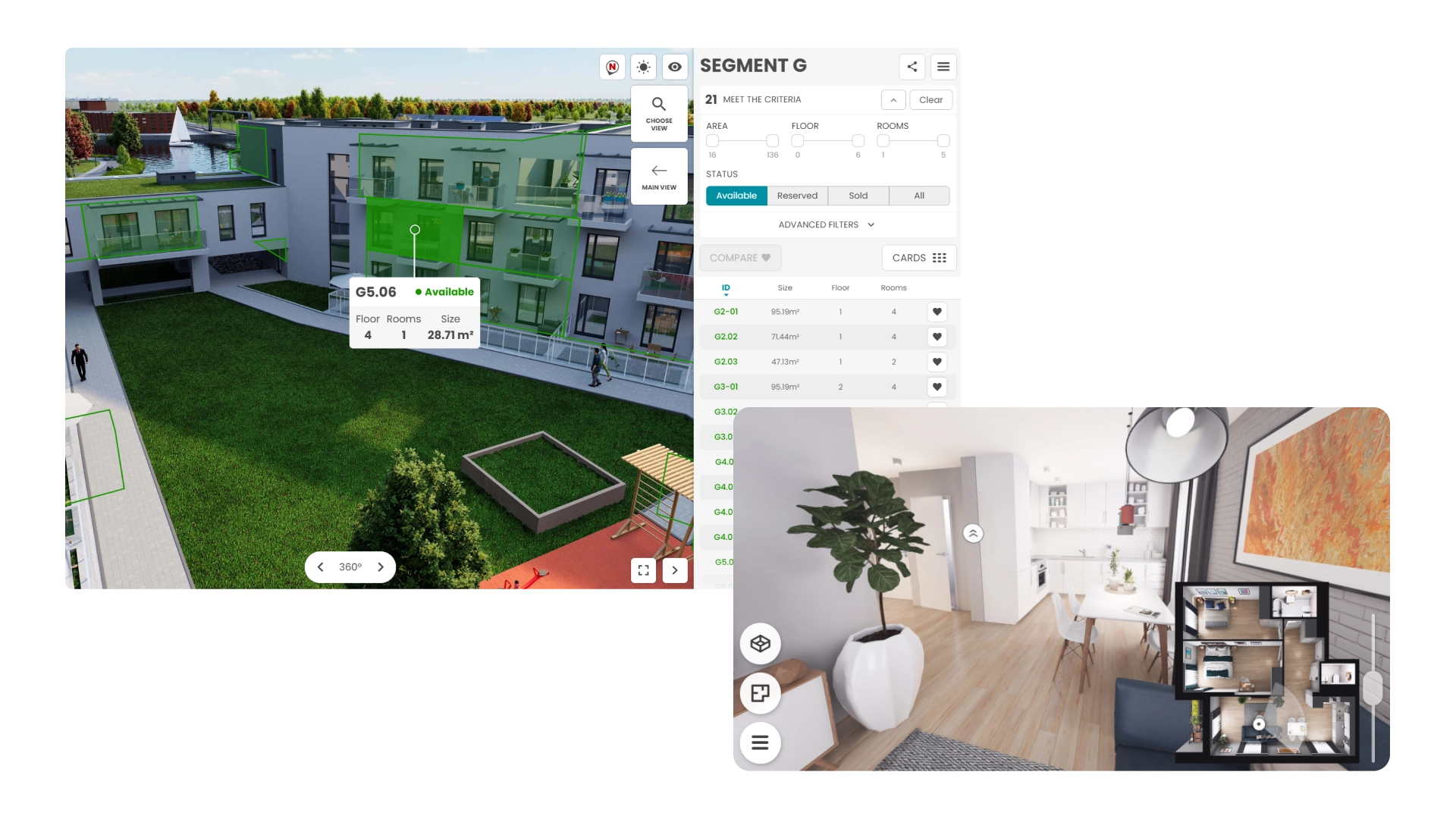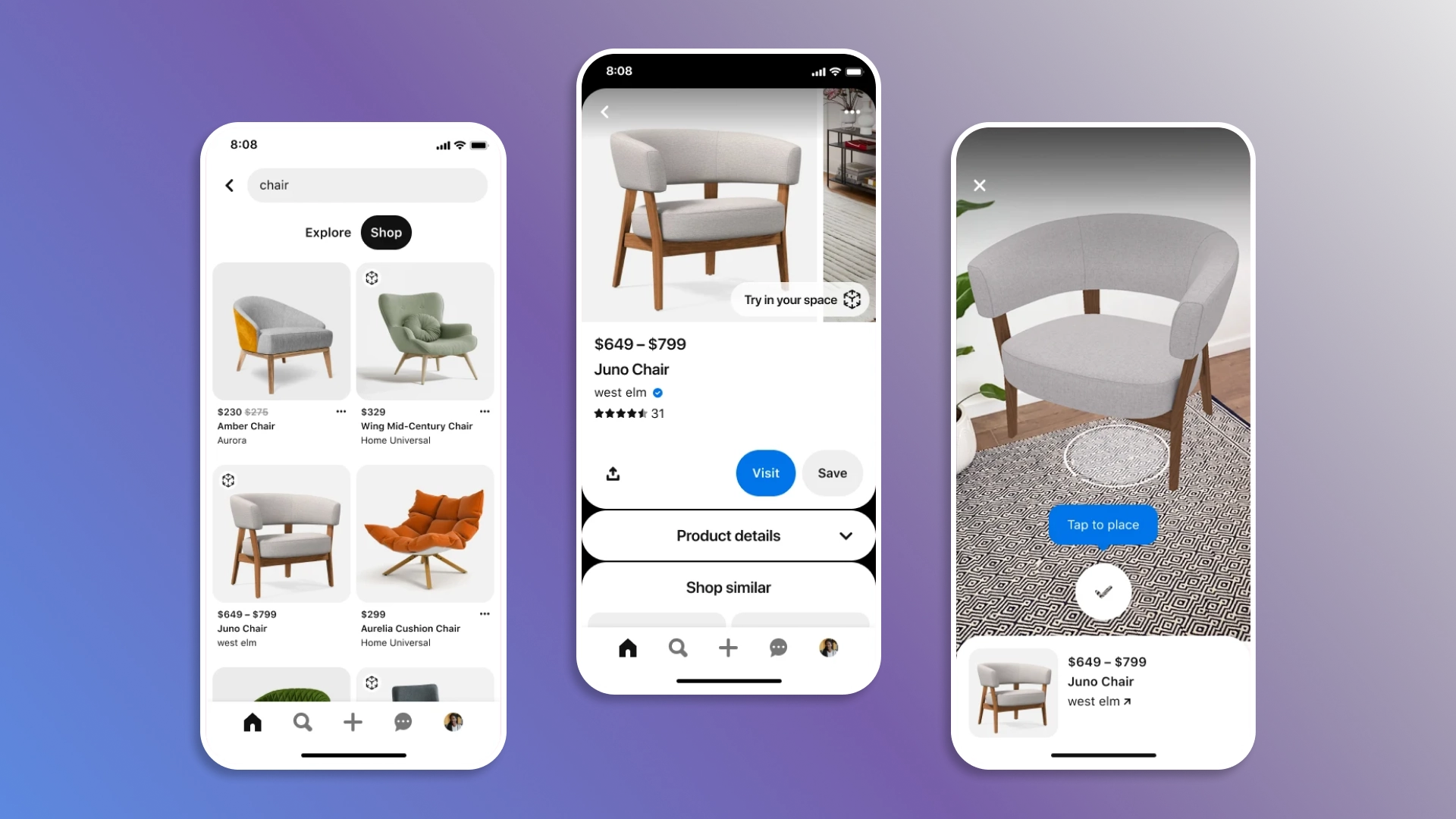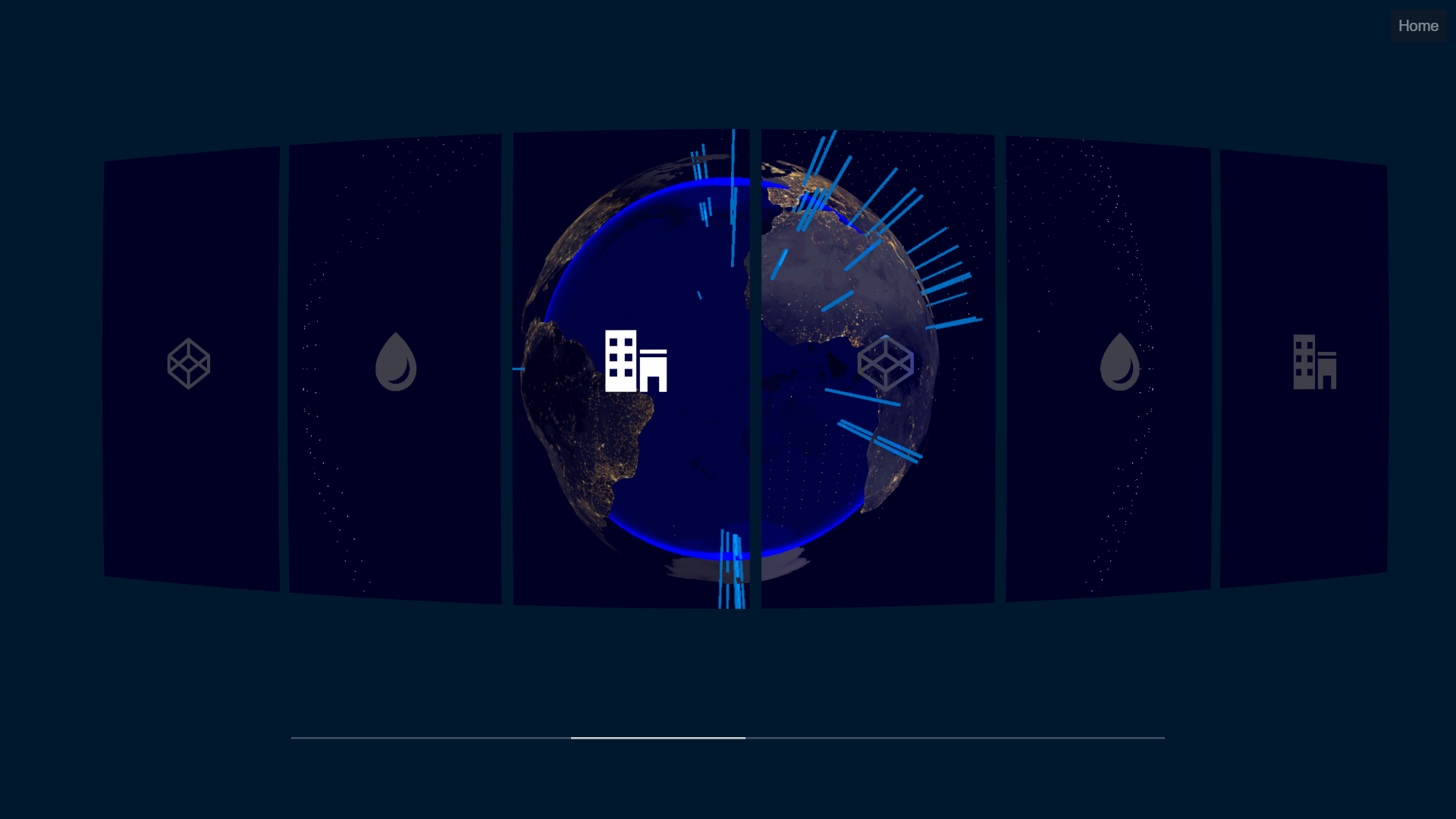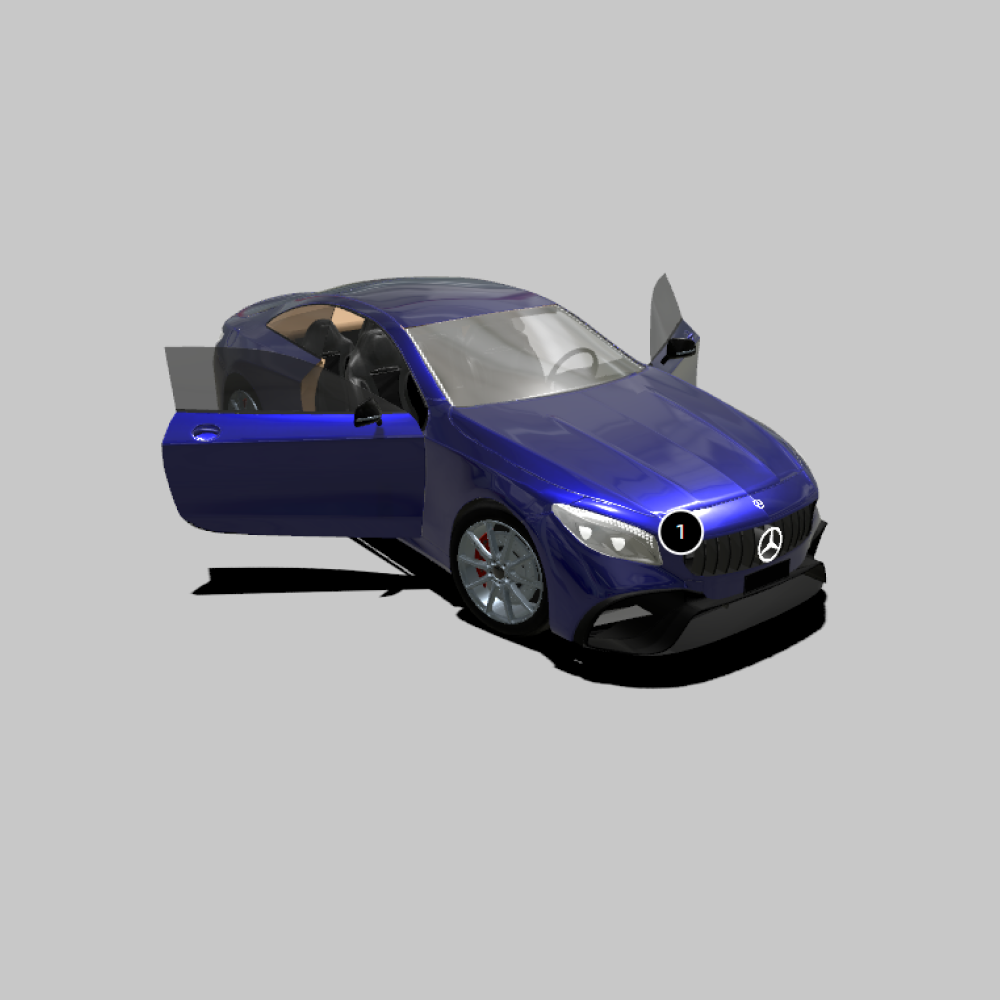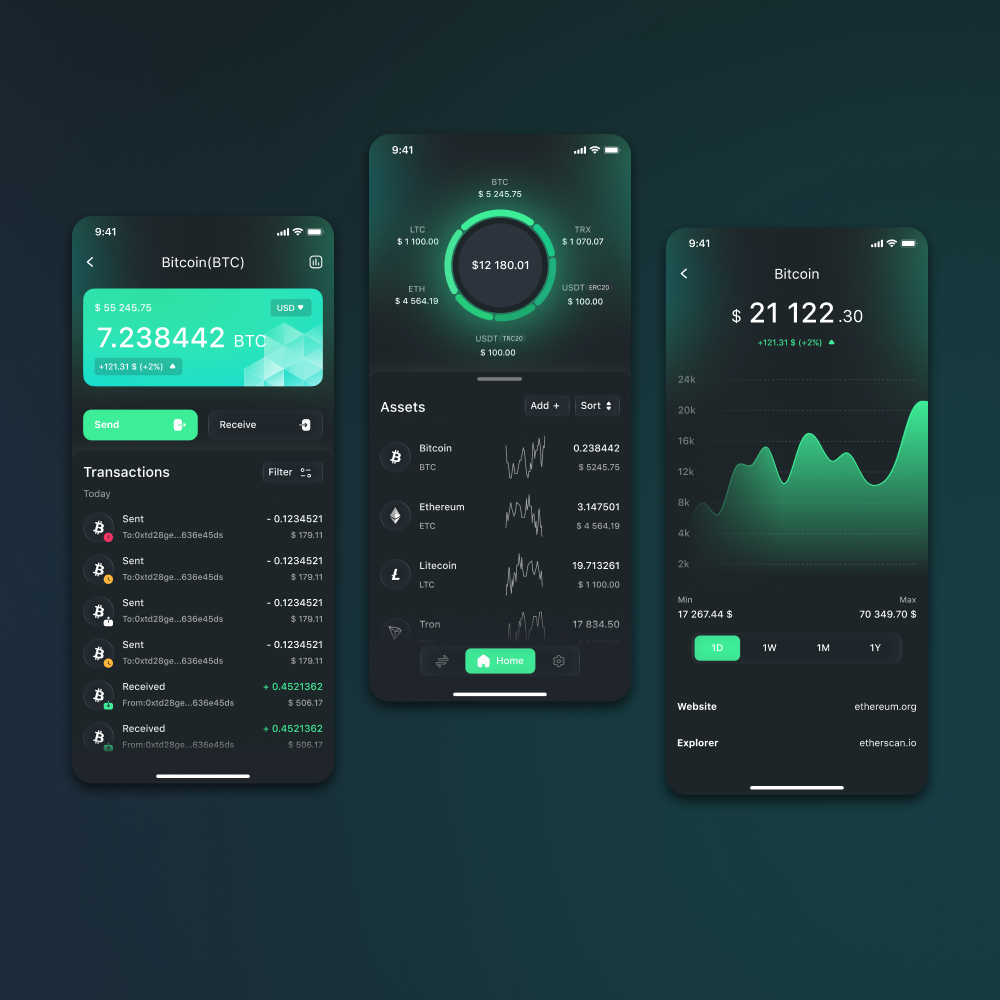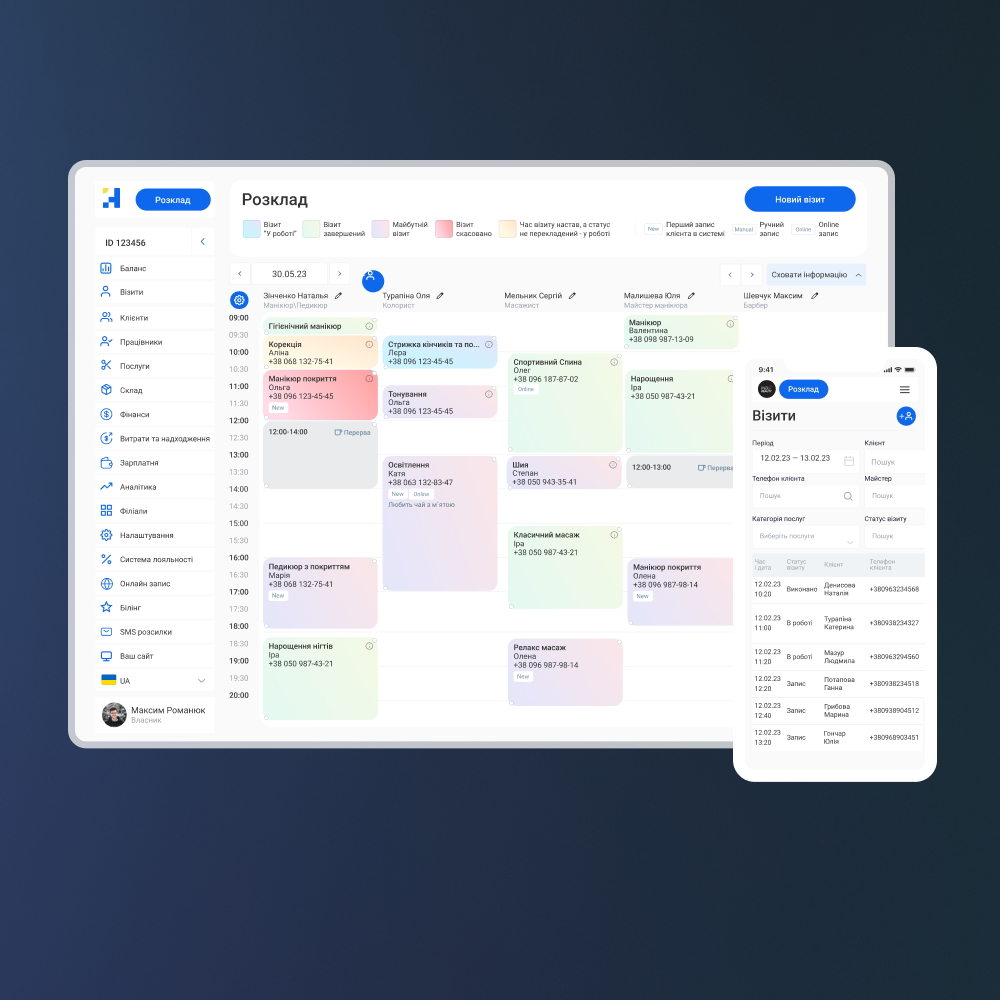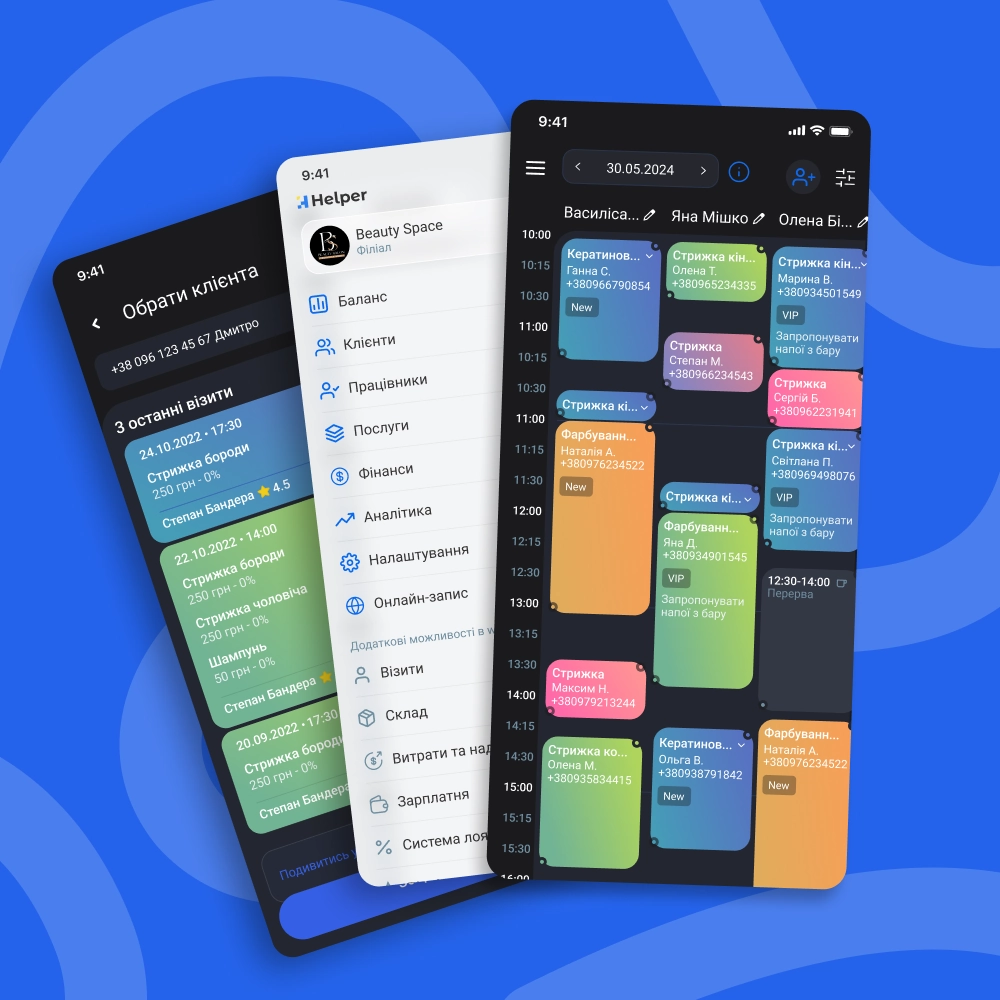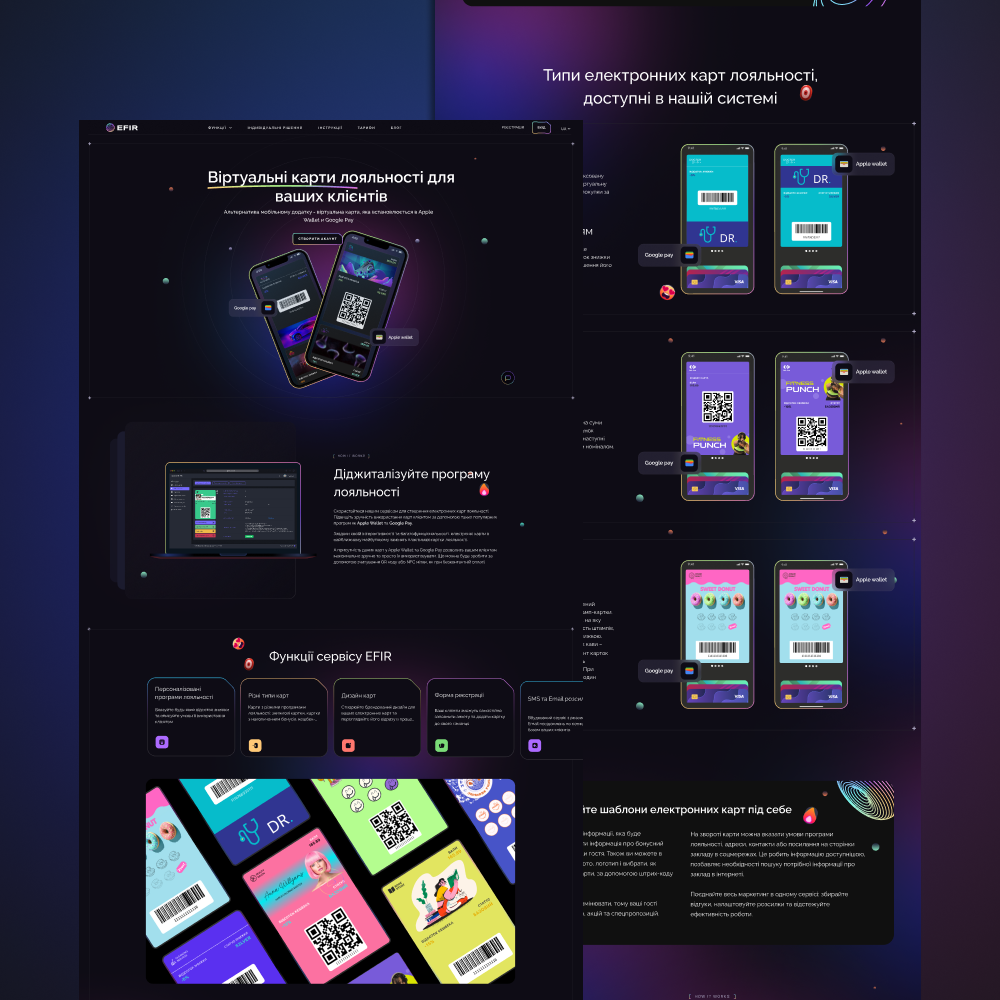








VR/AR technologies
AVADA MEDIA provides software development services using virtual and augmented reality. These are innovative technologies that change the rules of the game for modern business. They open up new prospects for companies, improving customer interactions and optimizing business processes, which is why they are making a splash in many industries, such as real estate, medicine, education and marketing.
According to Statista, the VR/AR market is expected to grow to $62 billion by 2029, with 3.7 billion active users. This highlights the importance of investing in developing virtual and augmented reality solutions that will not only help improve your company’s processes but also provide access to a rapidly growing audience.
What is the difference between VR, AR and MR
Virtual, augmented and mixed reality technologies offer various solutions that can be adapted to specific business tasks. However, they have important differences that determine their capabilities and methods of application, so we suggest considering them in more detail:
- Virtual reality (VR) . Involves the complete immersion of the user in a digital environment using special devices, such as VR glasses and controllers. This allows for the creation of unique virtual worlds that can be used, for example, for training, presentations, product testing, and entertainment.
- Augmented reality (AR) : Combines virtual elements with the real world, allowing digital information to be overlaid on physical objects using smartphones or glasses. This is especially useful for product demonstrations, marketing campaigns, and training.
- Mixed Reality (MR) . This technology combines elements of virtual and augmented reality, allowing you to add digital objects to a real environment and interact with them in real time. MR is actively used in areas such as engineering, architecture and design, when it is important to ensure the ability to control and manipulate digital models directly in physical space.
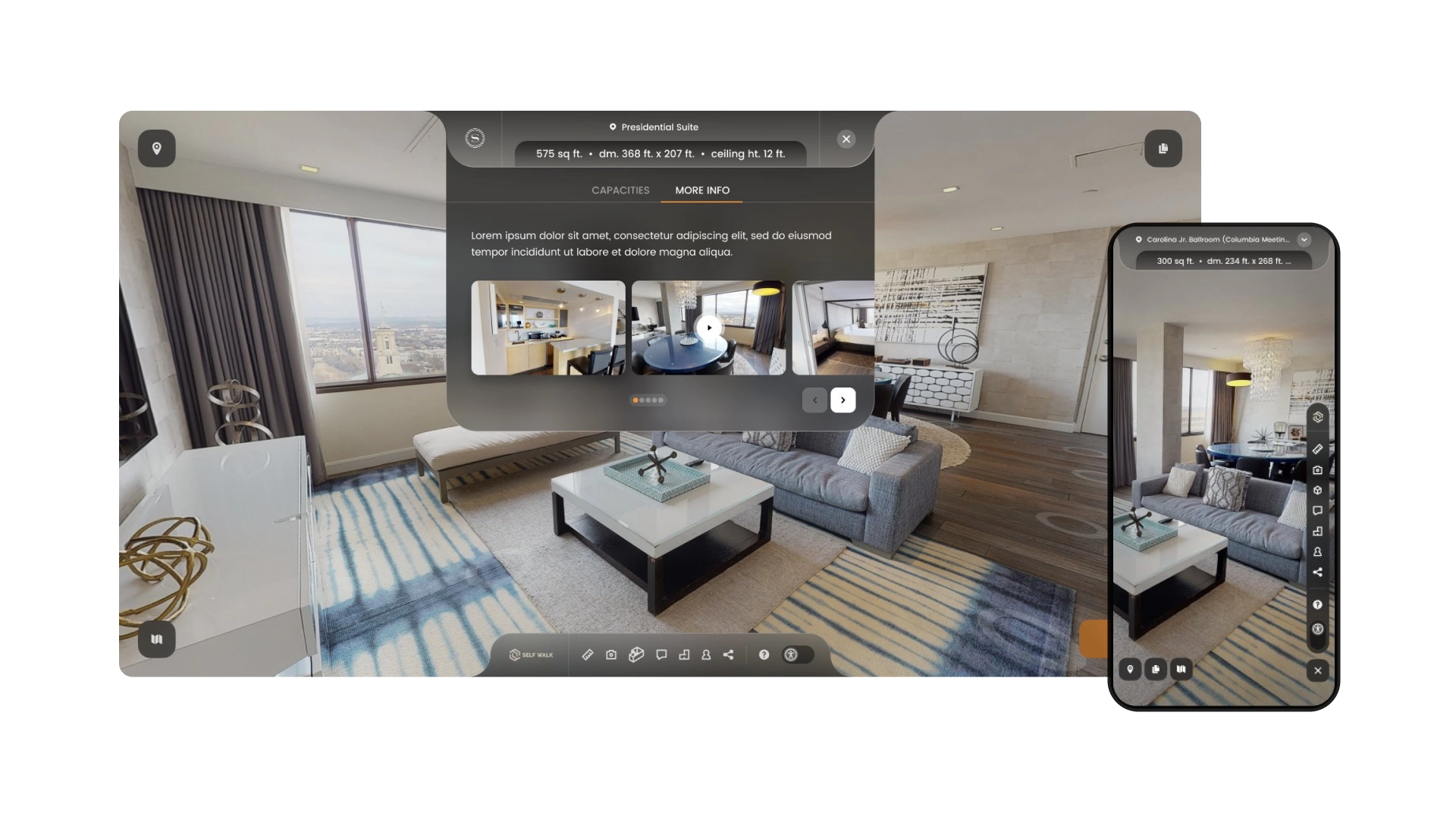
Which companies and in what cases need VR/AR technologies
Virtual and augmented reality have already proven themselves to be effective tools for most business areas. They help companies improve customer experience, increase the efficiency of employee training, optimize production processes, and solve many other important problems. Let's look at several industries where the implementation of VR and AR can be especially useful and appropriate:
- Real Estate . Virtual tours of real estate properties allow clients to take a “walk” through apartments, houses or offices without leaving their place. This is especially relevant for developers and realtors working with remote clients, as well as for luxury housing, where every element must be presented with maximum accuracy.
- Education and corporate training . VR and AR technologies open up new possibilities for both student learning and employee training. In educational institutions, interactive simulations help deepen knowledge and reinforce skills through practical experience. In the corporate sphere, they can be used to train staff in real work situations, whether it is mastering new processes or learning to work with equipment.
- Medicine . In medicine, VR, AR and MR are widely used for conducting virtual simulations of surgeries, treating post-traumatic stress disorder, conducting physical therapy and many other purposes. These technologies help to significantly improve the quality of medical care, as well as create comfortable conditions for patients.
- Marketing and advertising . AR and VR are completely changing approaches to marketing, turning advertising campaigns into exciting and interactive presentations. These technologies allow customers to literally “immerse themselves” in the world of the brand, study its products and interact with goods before buying, which causes a strong emotional response and creates an unforgettable user experience.
- Manufacturing . Virtual and augmented reality technologies significantly increase the efficiency of manufacturing companies. With AR, for example, it is possible to visualize data and instructions directly in the workplace. This allows employees to see recommendations for assembly, repair or maintenance of equipment in real time. At the same time, VR is often used to simulate processes and test new solutions in a virtual environment, which helps to reduce the costs of prototypes and reduce risks.
Benefits of VR and AR technologies for business
AVADA MEDIA experts have many years of experience in developing and integrating VR and AR solutions, and can help you implement the advanced capabilities of these technologies in your company, taking into account its specifics, individual goals and priorities. But what benefits will this bring to your business? Let's discuss in more detail:
- Increased customer engagement . Using virtual and augmented reality allows you to create a unique user experience that evokes an emotional response and holds the audience's attention. Customers can interact with products and services on a new level, which increases the chances of purchase and builds brand loyalty.
- Improved customer service . AR can greatly facilitate customer service by offering interactive instructions on how to use products or set up equipment. This reduces the time it takes to resolve issues and increases customer satisfaction.
- Expanding marketing capabilities . AR and VR technologies make advertising campaigns more interactive and exciting. They attract attention, allow you to convey the value of your products to your audience, and distinguish your business from competitors.
- Optimization of training costs . VR technology allows organizing the educational process in a virtual space with the effect of physical presence, which reduces training costs and ensures effective interaction with students remotely. AR, in turn, helps to superimpose digital instructions and prompts on real objects, which speeds up the learning process and reduces the need for expensive physical equipment.
- Improving data analytics . VR and AR technologies not only provide visualization of business data, but also allow for deeper analysis of processes in real time. For example, AR can display analytical data directly on production facilities or equipment, which speeds up decision-making and improves monitoring. At the same time, VR can be used to model and analyze complex scenarios.

Examples of successful use of VR/AR technologies
Many well-known brands are actively implementing advanced technologies in their processes, and VR/AR are no exception. Let's look at several successful cases of using virtual and augmented reality in a specific business.
IKEA
The largest furniture and home goods retailer actively uses augmented reality in its IKEA Place app. With its help, customers can virtually “place” furniture in their home to assess how it will look and whether it will fit into the interior. This not only improved the customer experience, but also reduced the number of returns and increased customer satisfaction.
Volkswagen
The German carmaker uses VR to train its employees on production lines. Virtual simulations allow staff to learn new processes and techniques in a safe environment without the need for physical equipment. Thanks to VR, Volkswagen has been able to significantly reduce training time and costs, as well as improve productivity and quality.
Walmart
The company has also implemented VR for training staff in its training centers. In virtual simulations, employees can practice various situations, from operating a cash register to handling emergencies. This has helped Walmart improve the quality of training and better prepare its staff, which has led to increased productivity and fewer errors in their daily work.
Gucci
The Italian luxury brand uses augmented reality technology to create an immersive and impressive customer experience. Gucci introduced an AR-powered online fitting room feature to its app, allowing customers to see how the brand’s accessories and shoes would look with their own style. This innovation has helped boost sales and strengthen the company’s image as a leader in the fashion world.
What technologies and tools does AVADA MEDIA use to develop VR/AR
At AVADA MEDIA, we always strive to create effective and memorable VR/AR solutions for our clients, aimed at solving specific business problems. To do this, we use only modern technologies and tools that ensure optimal project performance and impeccable quality of visualizations. Let's consider the main ones:
- Software and platforms . We use Unity and Unreal Engine game engines, which allow you to create realistic and interactive VR/AR applications with high performance and high-quality graphics. They provide development flexibility and support for all leading VR/AR devices.
- 3D modeling and animation . We create realistic objects and environments using tools such as Blender, Autodesk Maya and 3ds Max. These programs allow us to develop high-quality 3D models and animations, which is necessary for an impressive visual experience in VR and AR.
- Cloud services and data storage systems . We use cloud platforms such as AWS and Google Cloud to process and store large amounts of data, as well as to manage collaborative work on projects.
- Mobile development . To create AR applications on mobile devices, we use Vuforia, ARKit and ARCore tools. They allow you to integrate augmented reality into smartphones running IOS and Android, ensuring high accuracy of object recognition and interaction with the real world.
- Equipment . For testing and setting up interaction with the virtual environment, we use Oculus Rift, HTC Vive, and Microsoft HoloLens. These devices help debug user experience, check the quality of visualization, and check the correct operation of controllers in virtual and augmented worlds. HoloLens also makes it possible to integrate digital objects into a real environment, which is especially important for creating mixed reality applications.
- Testing and debugging tools . An important part of the VR/AR development process is testing. For this purpose, we use tools such as TestComplete and Unity Test Framework, among others. They help detect and eliminate errors at the early stages of production, and also ensure stable operation of the application on various devices.
The main advantages of working with AVADA MEDIA
AVADA MEDIA designs, develops and implements cutting-edge business products using virtual and augmented reality technologies. With vast experience in this industry, our highly qualified engineers not only create software, but also share ideas, strategies and advanced approaches to help find the best solutions for your company.
By contacting us, you receive:
- Access to first-class specialists and the latest technologies.
- Individual creative approach.
- Impeccable quality of project implementation.
- Professional technical support after release.
Trust AVADA MEDIA's experience in developing innovative software to bring your ideas to perfection and unleash the full potential of VR/AR technologies in your business.
